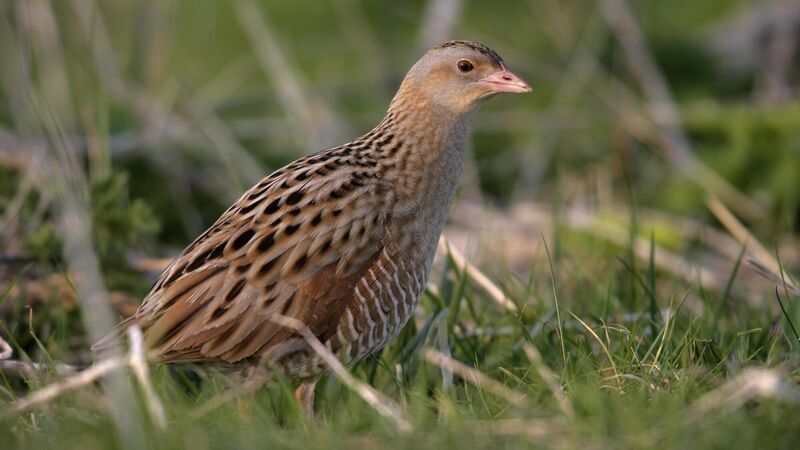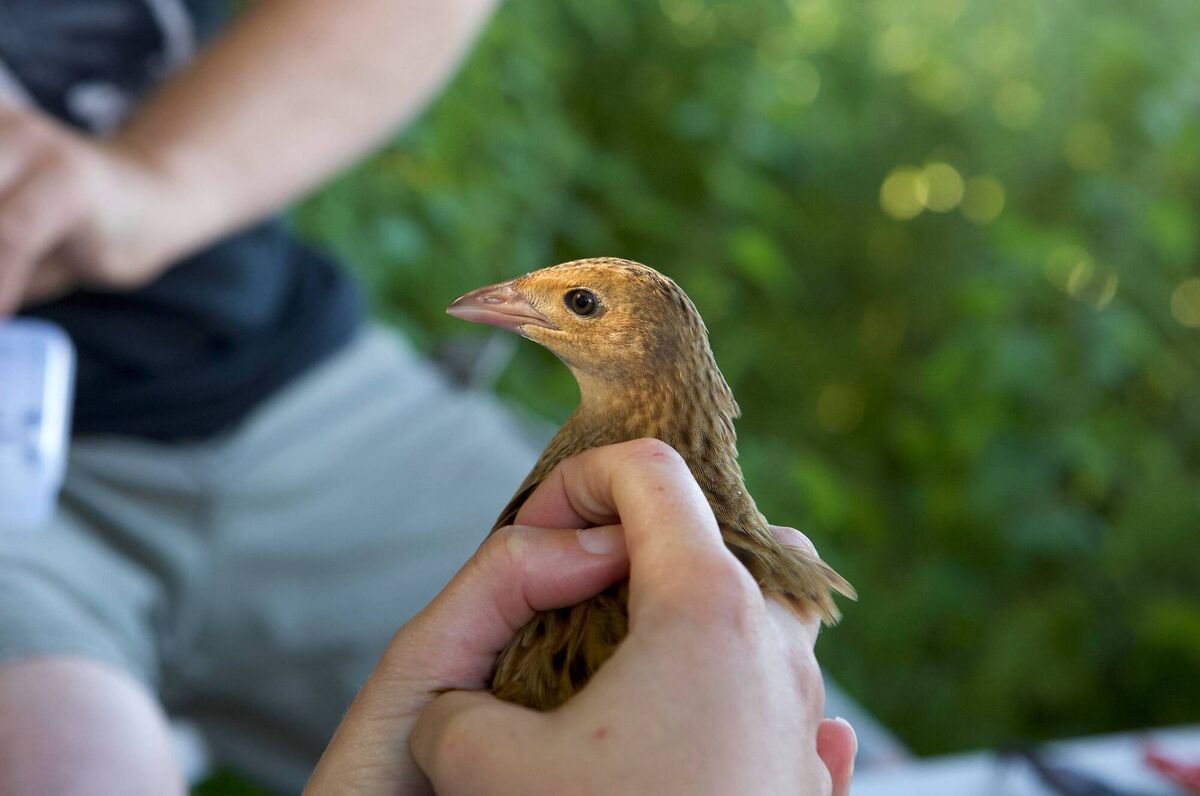Ireland's endangered corncrake population grows by 35%

A corncrake. File Picture
The population of endangered corncrakes in Ireland has risen by more than a third, according to new figures.
New research from the National Parks and Wildlife Service (NPWS) found that there has been a 35% increase in the corncrake population here over the past five years.
The NPWS says a total of 218 corncrake breeding territories have been recorded in 2023, a 10% increase on the total recorded last year.
Additionally, corncrakes have been spotted on the Aran Islands for the first time in 25 years, and the numbers of corncrakes recorded in their core breeding areas of Donegal, Mayo and Galway have increased by 15% since 2022.
Shy and secretive, the corncrake is known for its unique call. The bird is red-listed on the Birds of Conservation Concern in Ireland 2020-2026, given significant decreases in both numbers and range in Ireland and other European countries in recent decades.
Since 2021, the Corncrake/Traonach LIFE Project, a five-year project funded through the EU and co-ordinated by the NPWS, has been working on a number of measures to counteract the decline of the corncrake here. Through the project, data on the bird's population in Ireland is gathered annually.
Heritage Minister Malcolm Noonan said it was "fantastic to see that biodiversity action for the iconic corncrake is working."

Mr Noonan said the corncrake population increase was "remarkable" and "a testament to the hard work and commitment of so many, not least the farmers and communities at the heart of the effort."
According to the NPWS, corncrake conservation measures involve pre-emptive planning with farmers in their breeding areas, primarily located on the north and west coast.
NPWS data shows a number of measures which are effective in improving the bird’s habitat, namely, the creation of large patches of nettles or other crops for the birds to hide in, and the delaying of grass mowing until mid-August enable the corncrake to raise broods of chicks in safety.
The NPWS says that the involvement of 250 farmers and landowners now managing close to 1500 hectares of land for corncrakes has been key to success as regards increasing population numbers.
“We are now seeing the birds expand their range into new areas in Sligo and Kerry as well as areas outside the core LIFE project sites. This is great news and even better that NPWS has the supports in place to grow the success of the LIFE project work and make potential actions for the birds available to more farmers," said Ciaran Reaney, who co-ordinates the NPWS Corncrake Conservation Programme.
"I think people have a real grá for the corncrake and want to hear it back in our landscape.”









